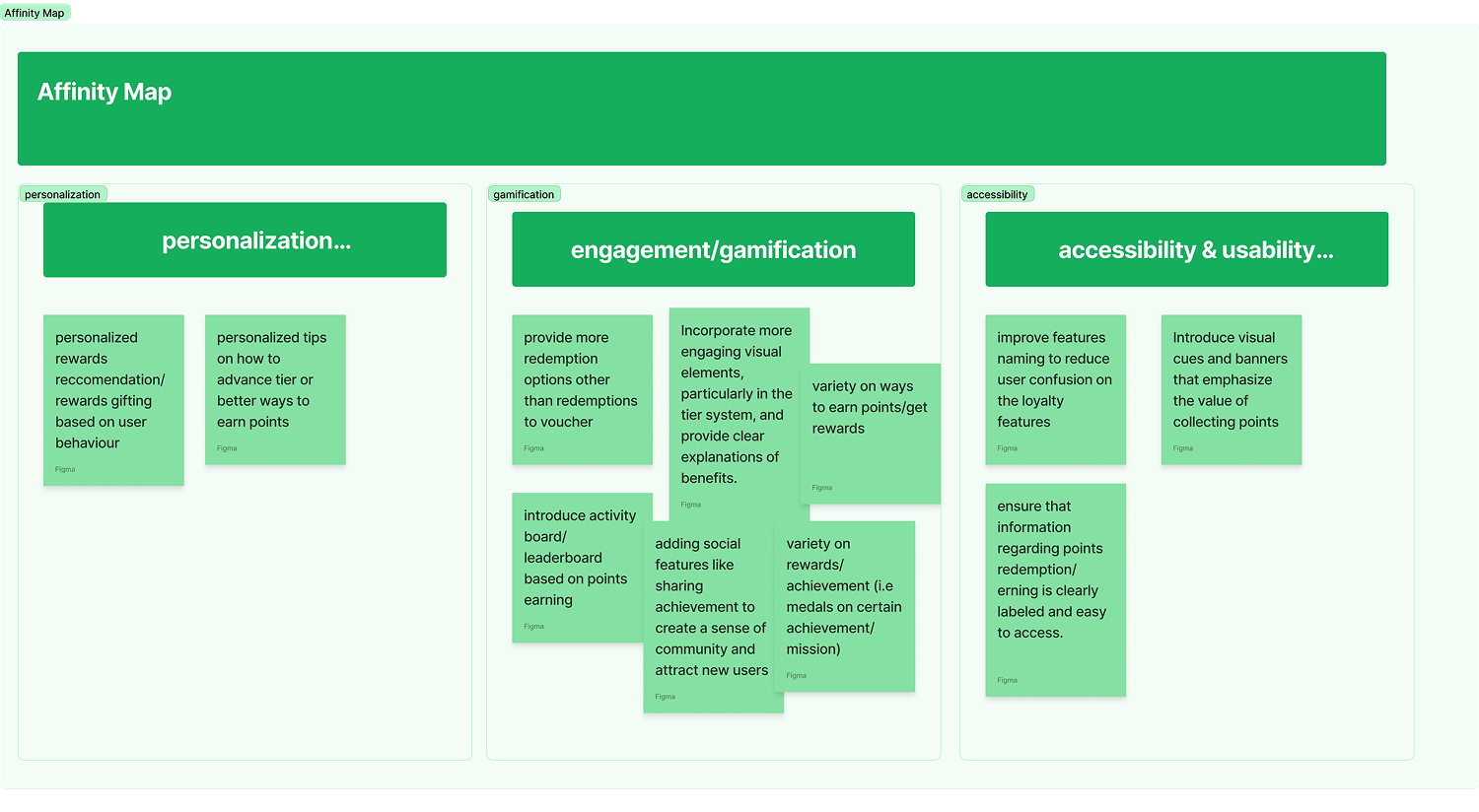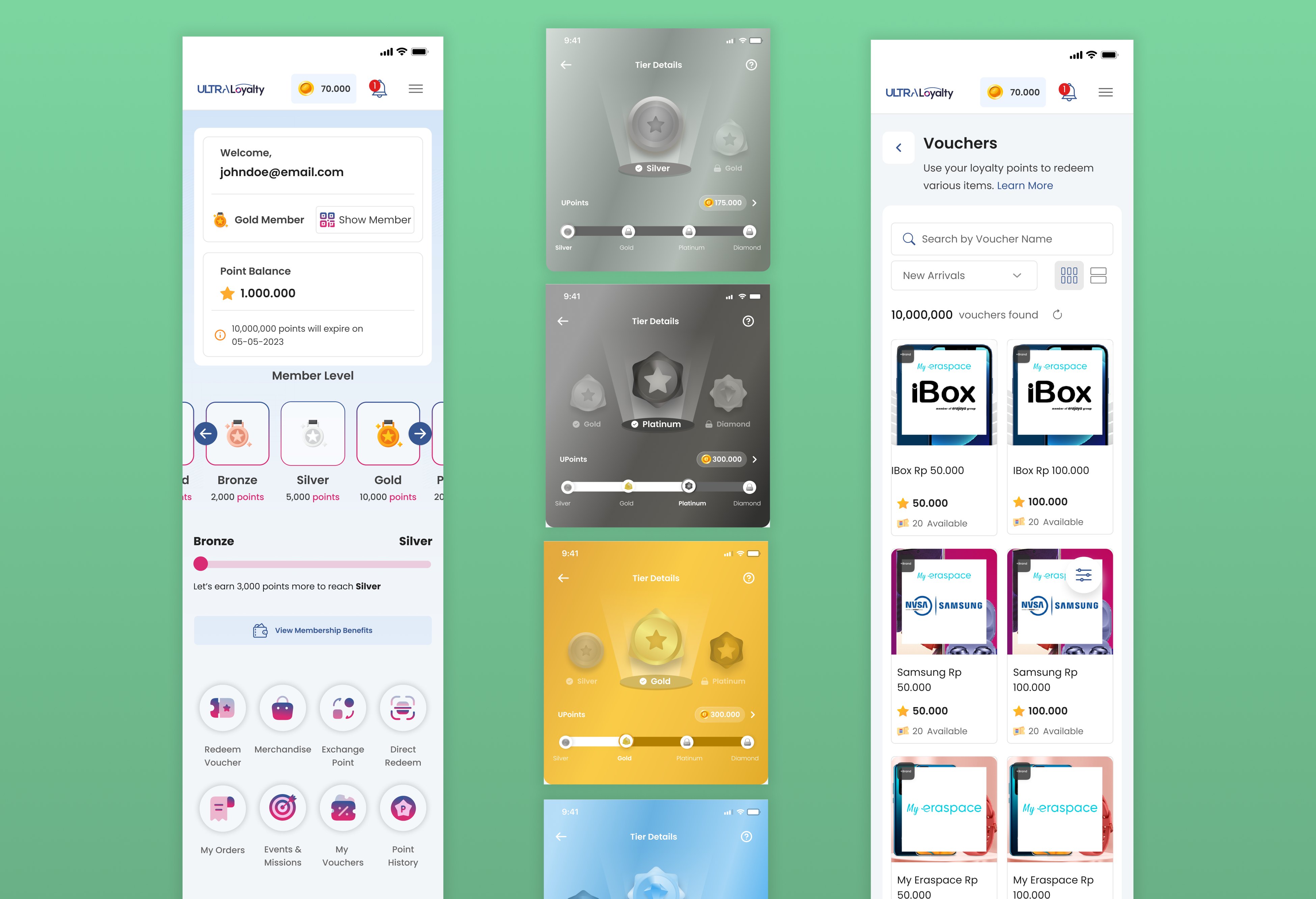
Research Overview
Our primary goal of conducting this research is to understand the current pain points users face within the Loyalty Program and identify opportunities for improvement.
Through this research, we aim to uncover specific issues affecting user experience and satisfaction, and ultimately provide actionable insights to guide future enhancements that will drive meaningful improvements to the product.
The method of this research is through stakeholders feedbacks & desk research.
Design Process

What to do Next: Opportunity Areas
- Enable business clients to modify the loyalty interface, offer plug-and-play features, and tailor promotions to align with their branding and target audience.
- Enhance the dashboard to provide insights on customer behavior, program performance, and redemption trends to help clients make data-driven decisions.
- Allow businesses to create and adjust promotions, enabling them to target specific customer groups and enhance engagement
- Broaden the catalog of partners for redemption, giving clients more value to offer their customers.
Discovery
1. Value Proposition Canvas
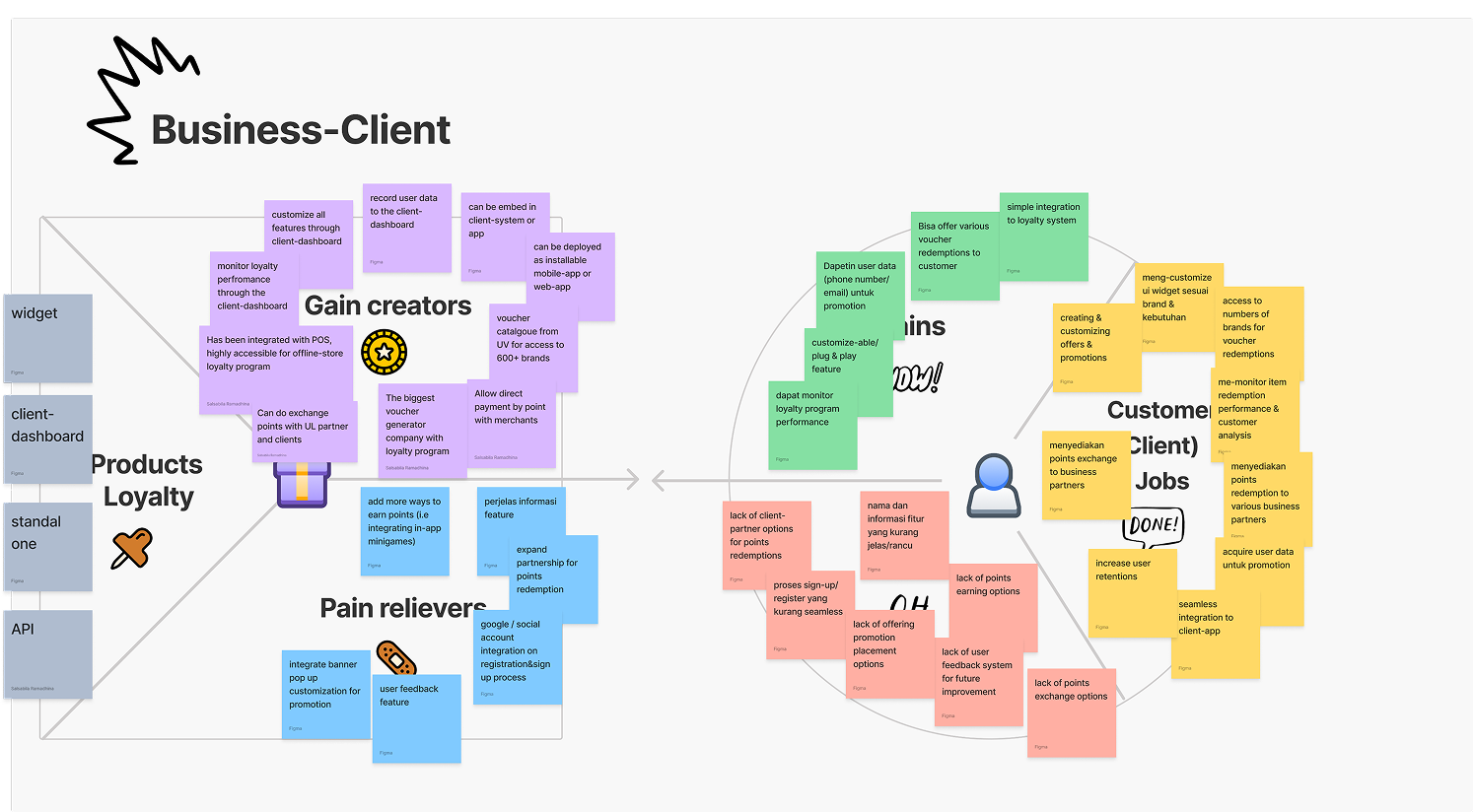
In the discovery phase, we used the Value Proposition Canvas to identify and explore improvement opportunities within the Loyalty Program. This tool helped us map user needs, frustrations, and desired outcomes, highlighting key misalignments between what users value and what the program currently delivers. Through this analysis, we pinpointed specific pain points and under-leveraged gains, giving us clear insights into how we can better align the program’s value with user expectations to boost engagement, satisfaction, and retention.
2. Widget
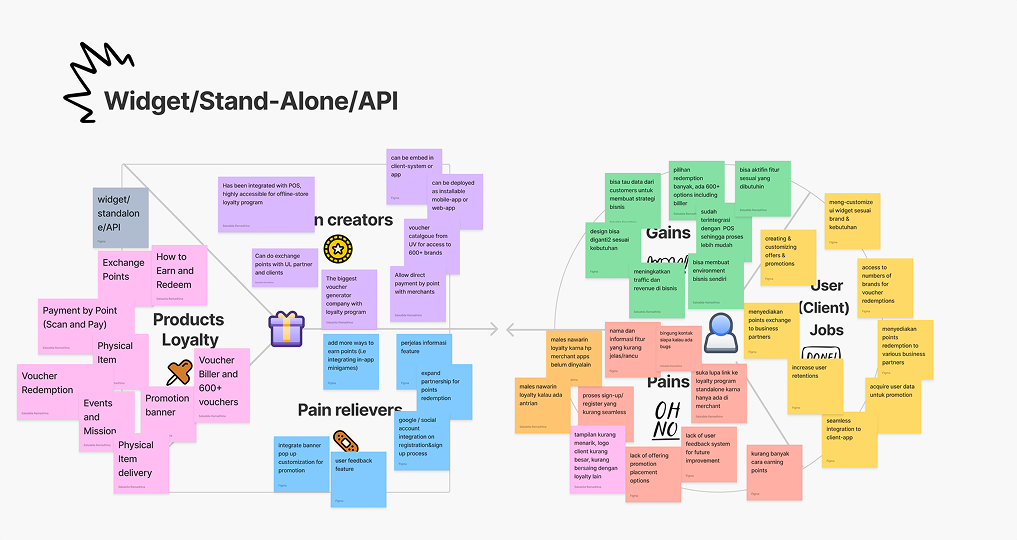
Our loyalty widget solution positioned as a highly customizable, multi-platform loyalty system with extensive voucher redemption options, seamless integrations, and tools to enhance customer retention and business insights. Addressing current gaps in gamification, feature clarity, and partnership expansion will ensure stronger market positioning and client satisfaction.
3. UVL Dashboard
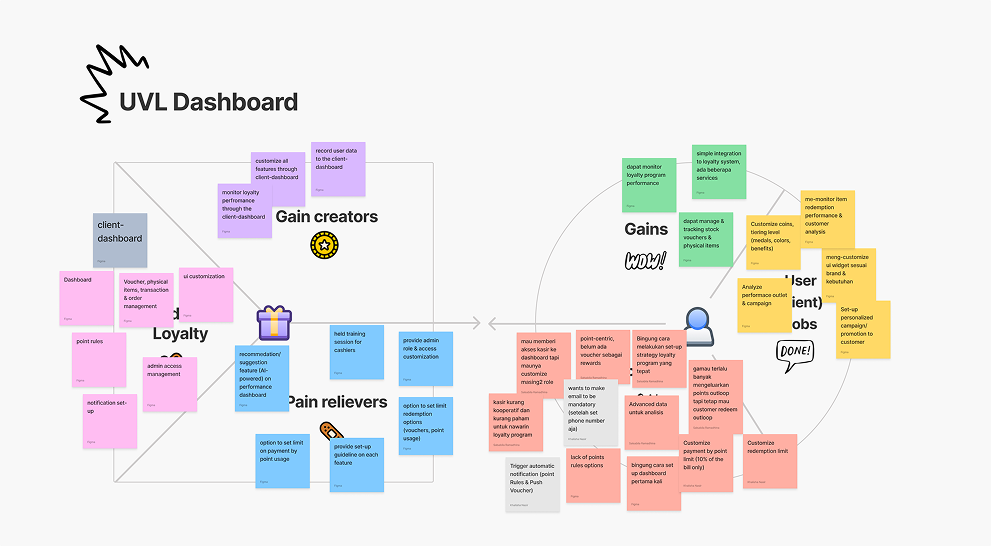
Our UVL Dashboard provides a comprehensive platform for loyalty program management, emphasizing customization, performance monitoring, and user-centric features. Addressing setup challenges, enhancing analytics capabilities, and simplifying processes for users and staff will maximize its value proposition and attract more clients.
4. Competitor Analysis
Our objective of conducting this competitor analysis is to assess the competitive landscape of various loyalty solution providers.
The scope of this analysis are:
- Analyze global and local competitors offering loyalty solutions.
- Compare their features, pricing models, target markets, and competitive advantages.
Why This Analysis Matters?
- To inform our product strategy and positioning.
- To identify potential market gaps and opportunities.
- To benchmark our offerings against competitors.
- To anticipate future trends and challenges.
4.1 Competitor Analysis (Global)
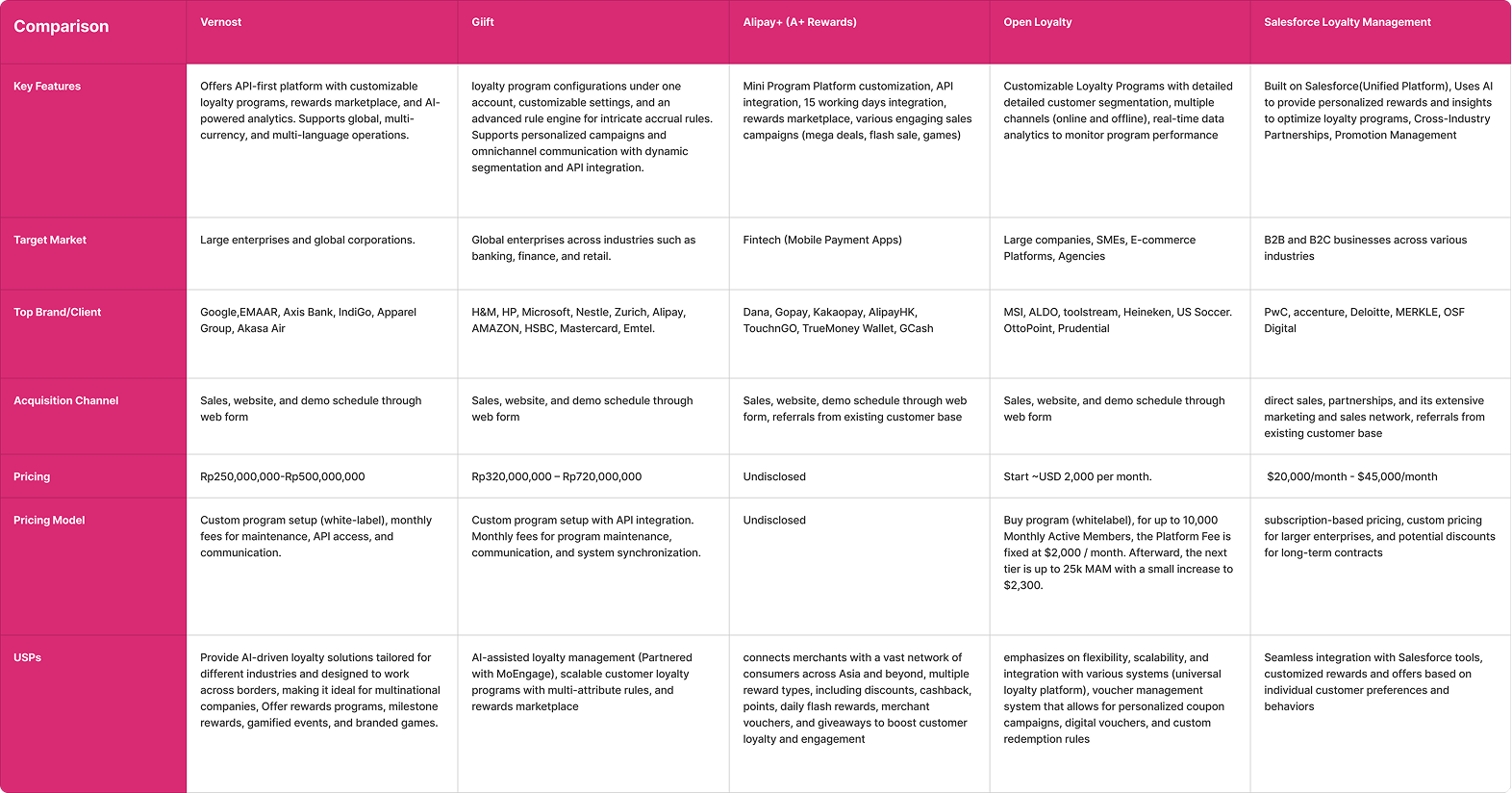
4.2 Competitor Analysis (Local)
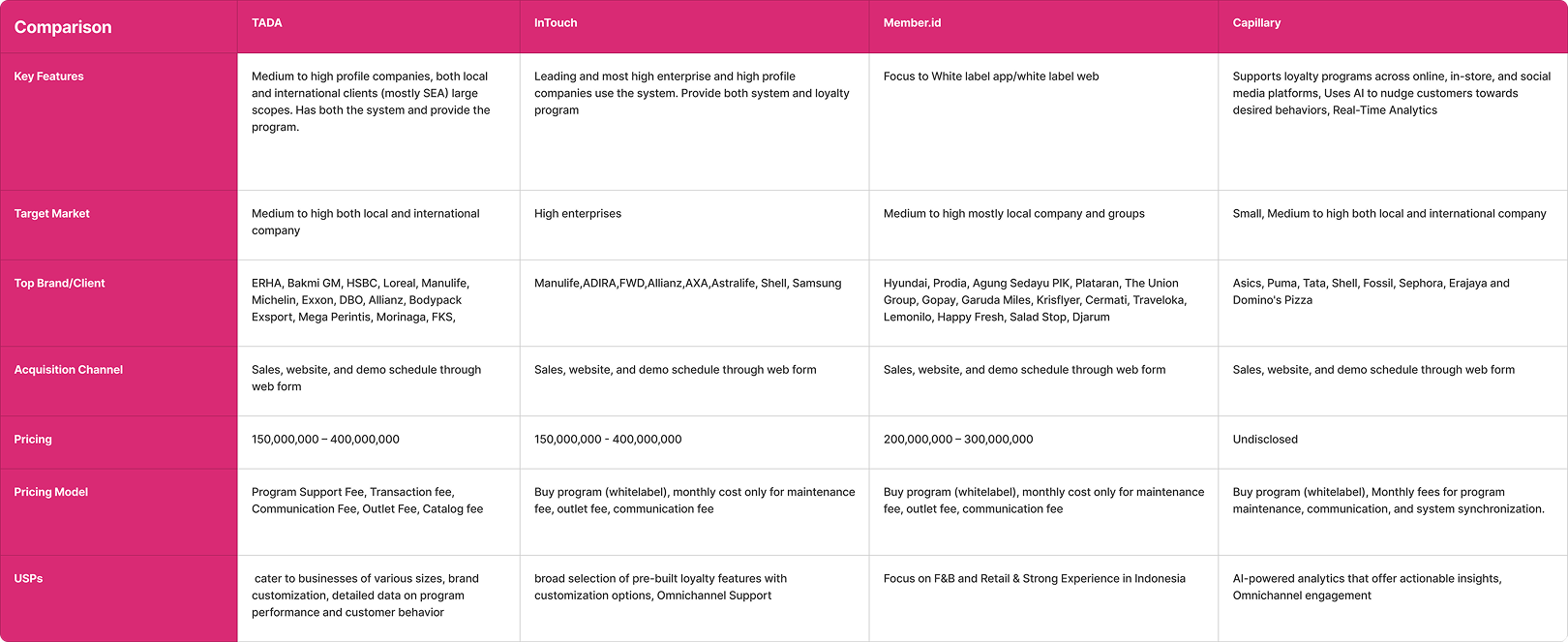
4.3. Competitor Analysis Summary
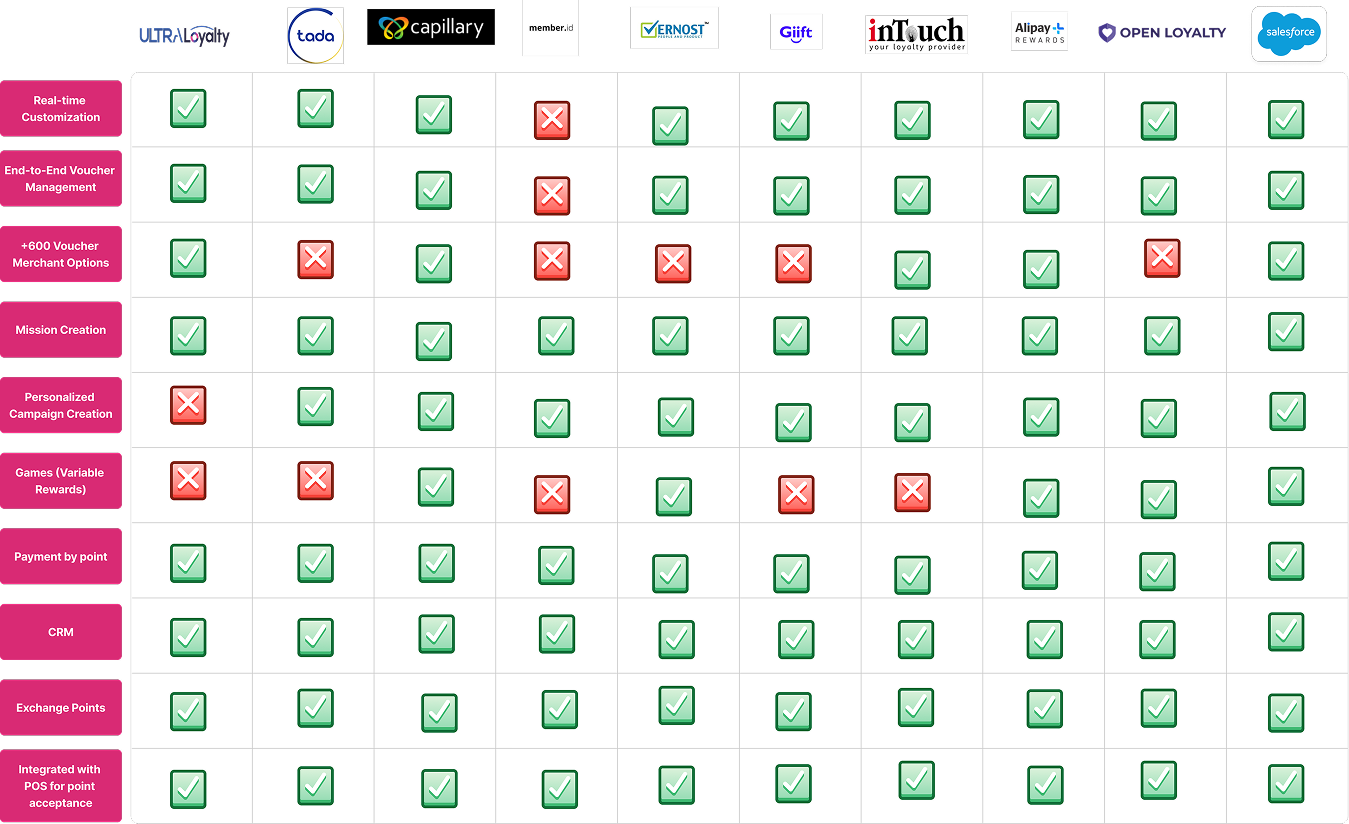
The loyalty program market is highly competitive, with a mix of global giants (e.g., Salesforce, Capillary) and specialized regional players (e.g., TADA, Vernost). Competitors are focusing on AI-powered analytics, omnichannel capabilities, and customization to address diverse client needs.
Key takeaways:
- Many competitors lack gamified rewards and personalized campaign recommendations, presenting an opportunity for differentiation.
- Limited voucher ecosystem diversity in some competitors, expand partnerships to stand out.
- Invest in AI for predictive analytics and behavior-driven rewards, as competitors like Salesforce dominate this niche.
- Ultra Loyalty lags behind in gamification and partnerships compared to players like Capillary and TADA.
5. Product & Market Positioning Map
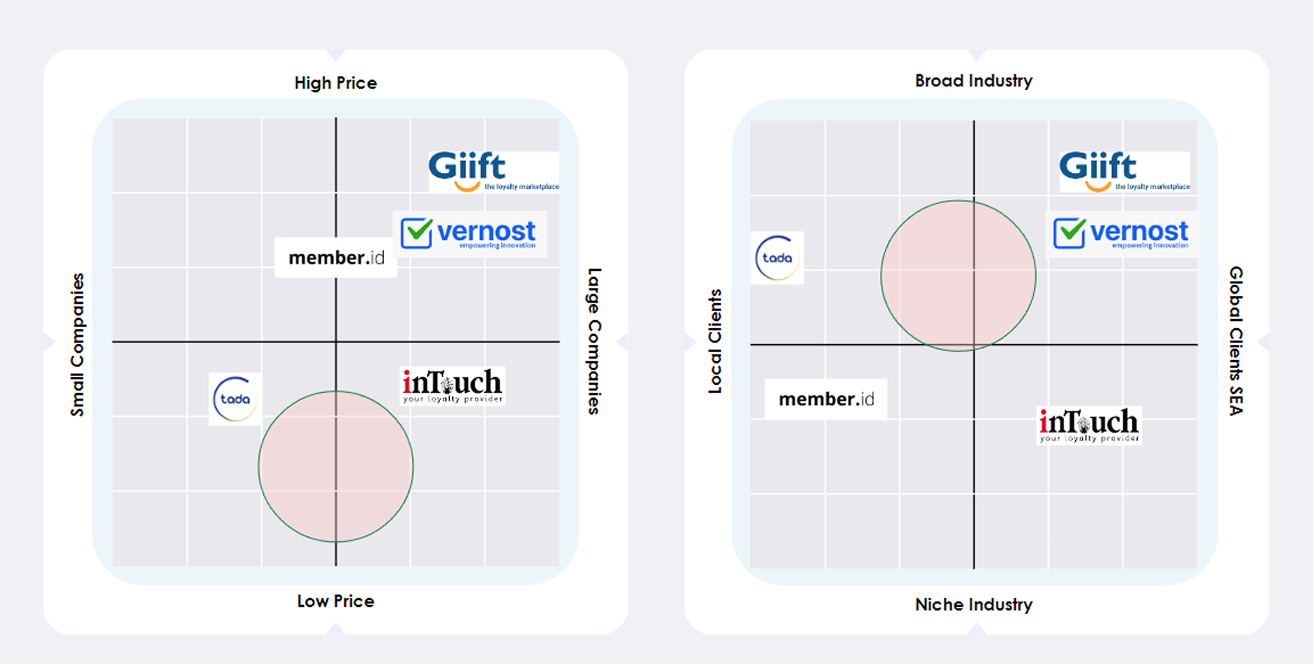
6. SWOT
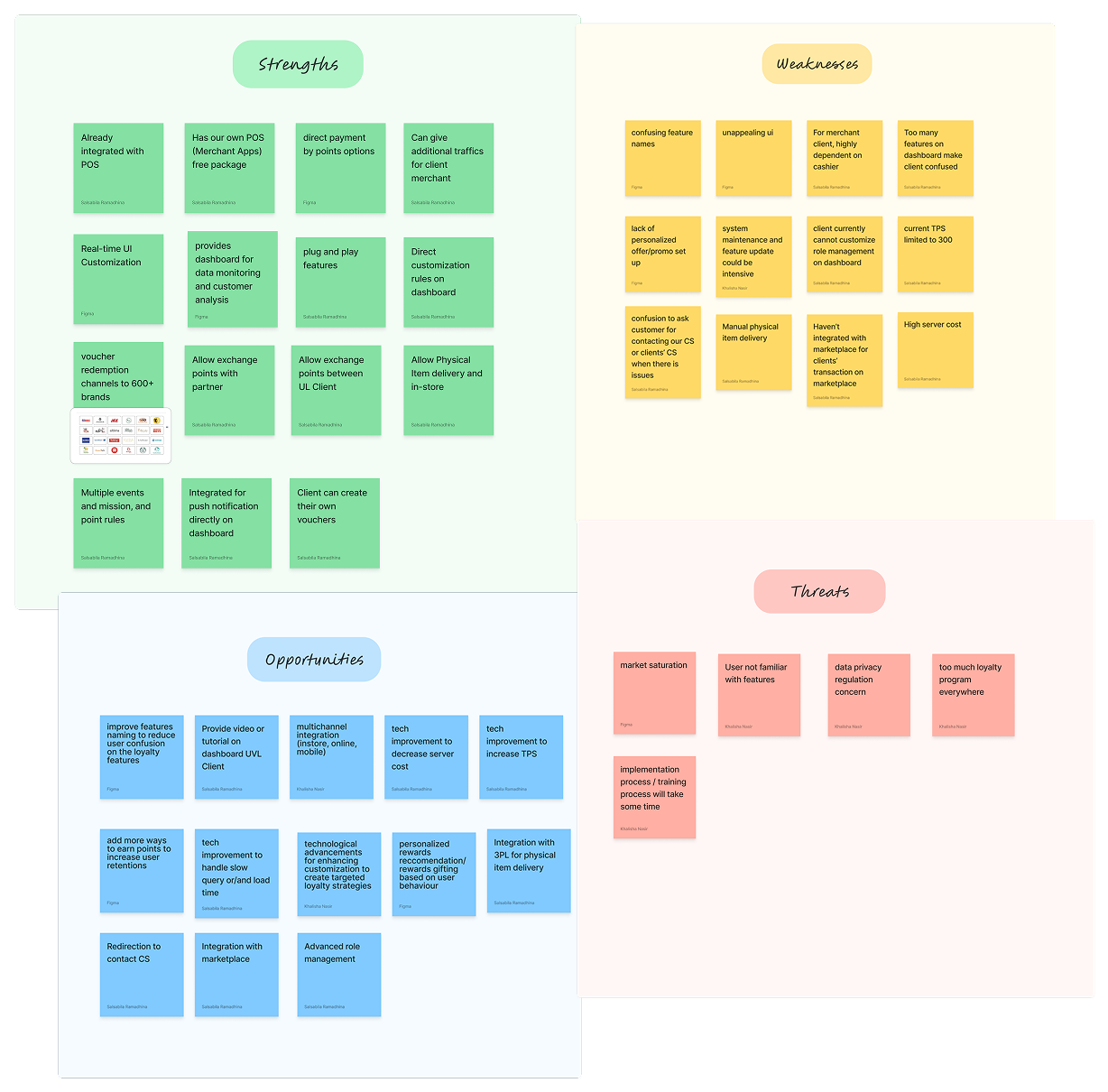
Strengths:
1. Robust Feature Set:
- Integration with POS, direct payment by points, and real-time UI customization.
- Limited voucher ecosystem diversity in some competitors, expand partnerships to stand out.
- Allows physical item delivery and voucher redemption with 600+ brands.
2. Customizable:
- Dashboard for customer analysis and direct customization rules.
- Plug-and-play features and multiple events or mission creation.
3. Seamless Integration:
- Push notifications and point exchanges between partners and clients.
Weaknesses:
1. User Experience Challenges:
- Confusing feature names and an unappealing UI.
- Overwhelming features on the dashboard for merchant clients.
2. System Limitations:
- Current TPS limited to 300, high server costs, and lack of role management customization.
- Manual processes (e.g., physical item delivery) and no integration with marketplaces.
Opportunities:
1. Feature and Technology Enhancements:
- Improve feature naming, tutorials, and TPS scalability.
- Multichannel integration (mobile, in-store, online) and advanced role management.
2. Personalization and Partnerships:
- Technological advancements for tailored loyalty strategies.
-Integration with 3PL for delivery and marketplaces for transactions.
3. User Retention:
- Add more point-earning methods and personalized rewards to boost engagement.
Threats:
1. Market Challenges:
- Market saturation and abundant loyalty programs dilute differentiation.
- Data privacy concerns and user unfamiliarity with features pose adoption risks.
2. Operational Barriers:
- Lengthy implementation and training processes could hinder client onboarding.
Define
1. User Persona - End User
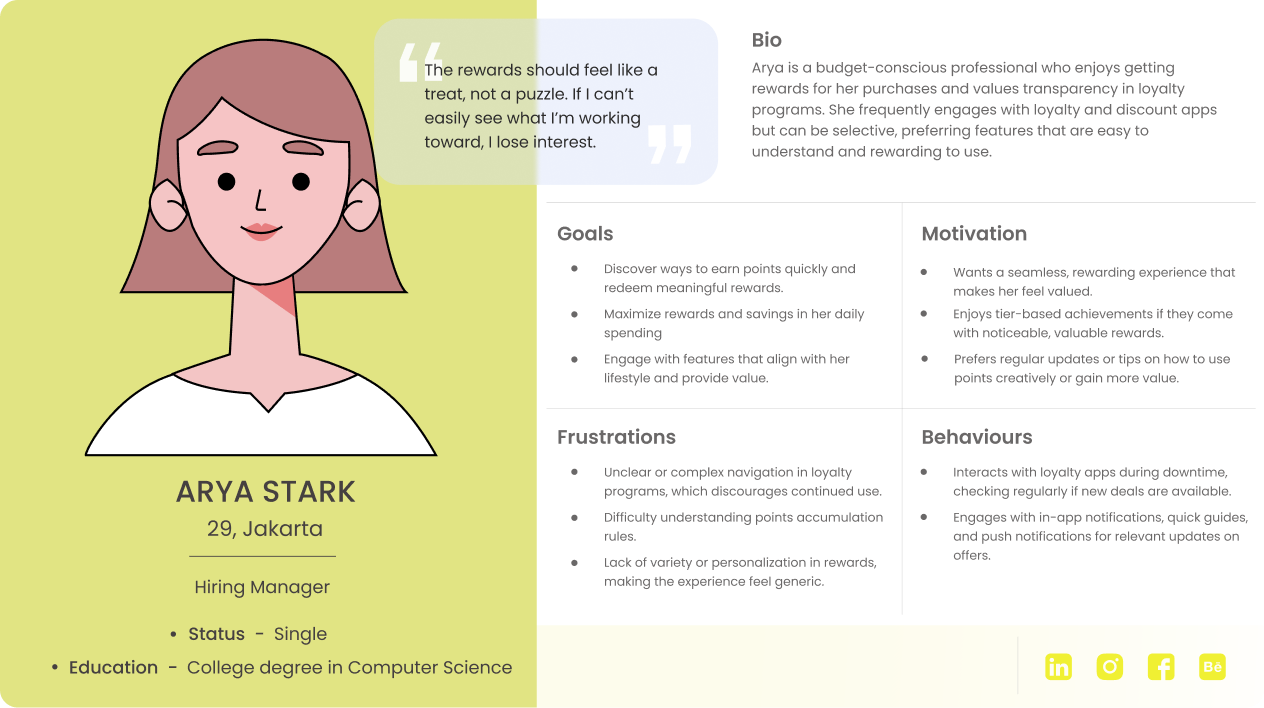
1.1 User Persona - Business Client
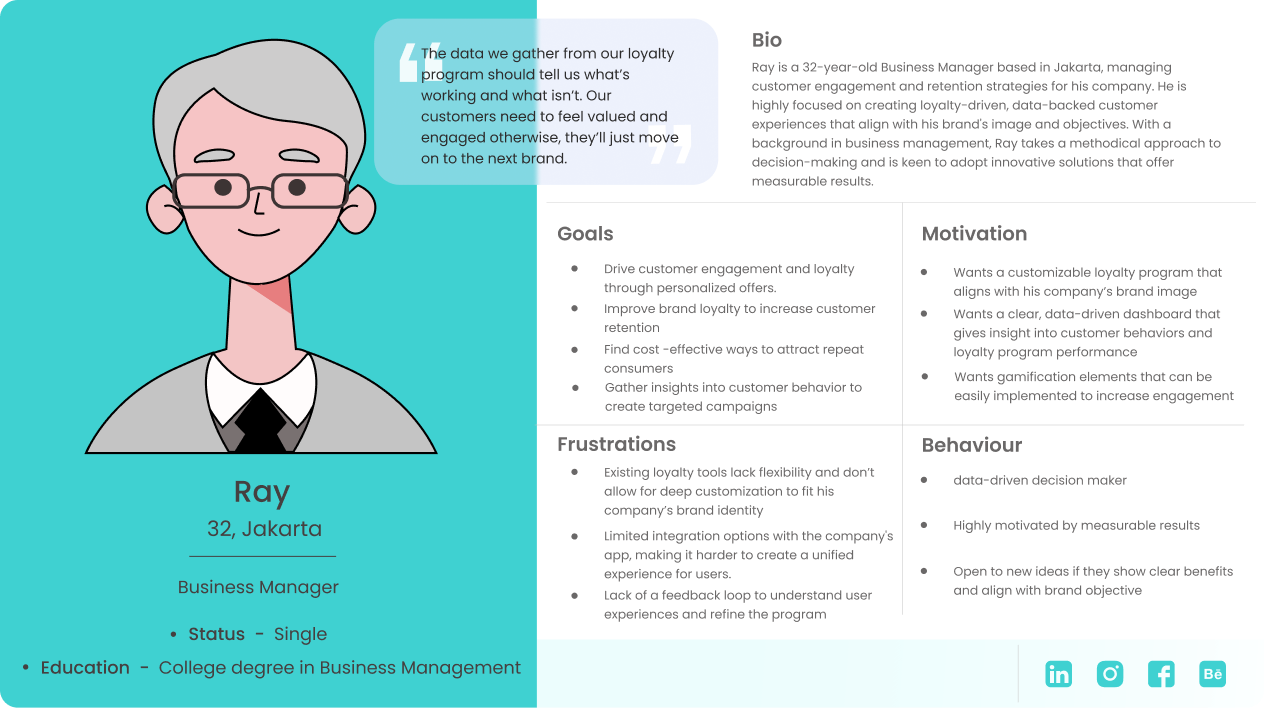
2. Empathy Map
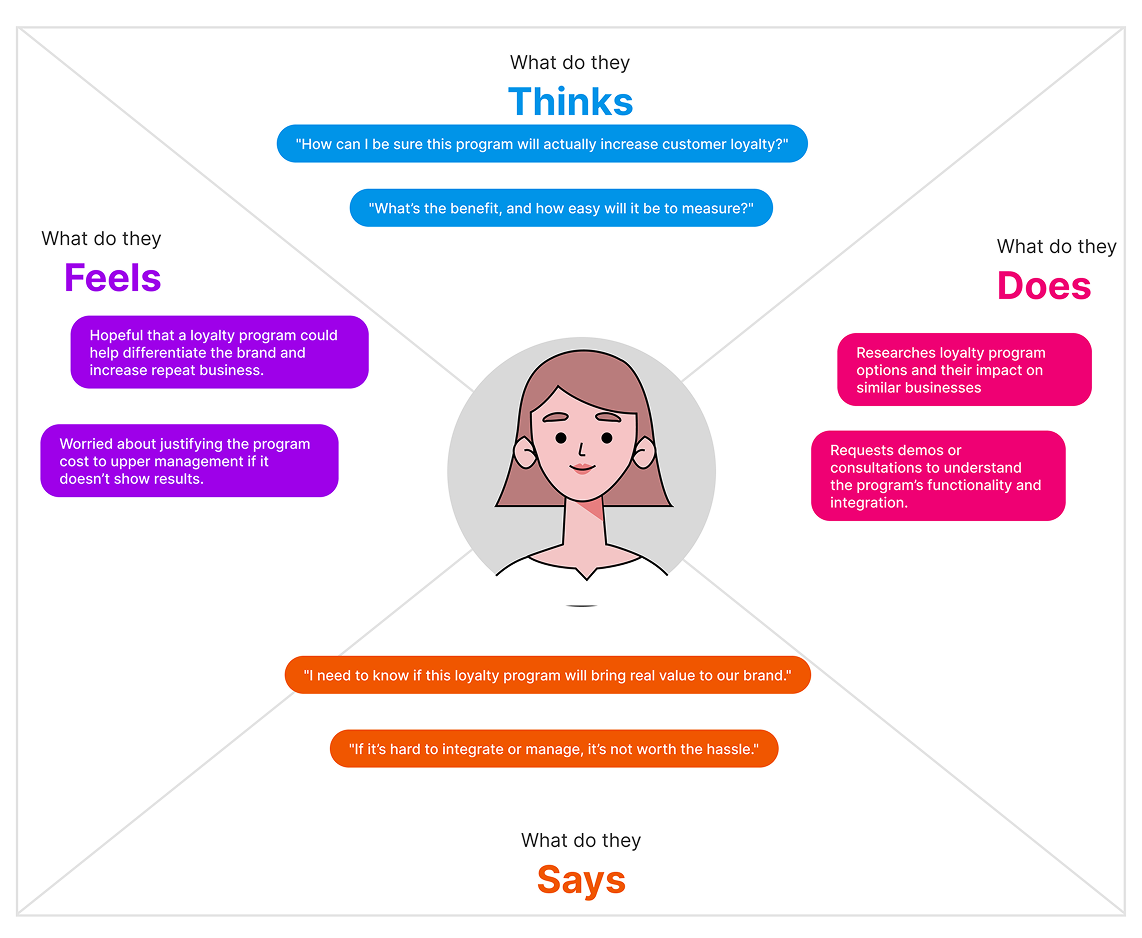
3. Value Proposition Canvas

In the discovery phase, we used the Value Proposition Canvas to identify and explore improvement opportunities within the Loyalty Program. This tool helped us map user needs, frustrations, and desired outcomes, highlighting key misalignments between what users value and what the program currently delivers. Through this analysis, we pinpointed specific pain points and under-leveraged gains, giving us clear insights into how we can better align the program’s value with user expectations to boost engagement, satisfaction, and retention.
4. Affinity Mapping
